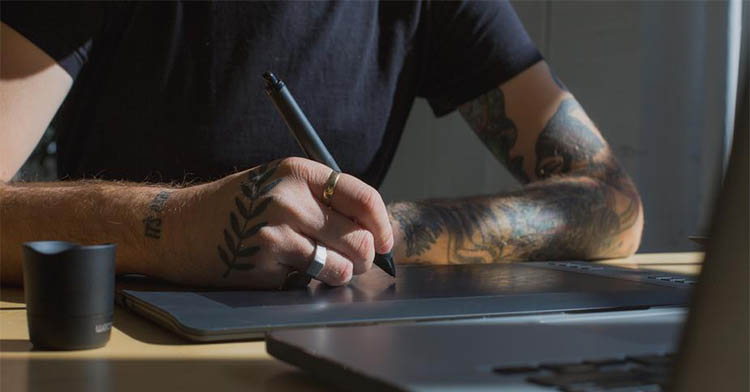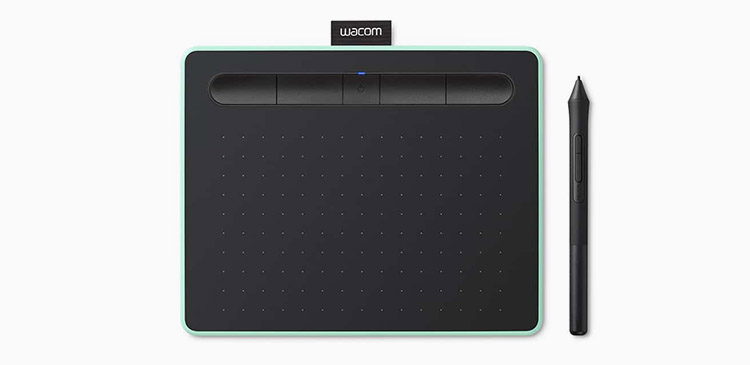
Getting started with digital art can be daunting, there are just too many things to learn and you don’t know where to start.
There is no single consensus or guidelines for beginners on how to get started with digital art.
Everyone learned digital art their own way and if you ask 10 different artists you will likely get 10 answers, and they all would seem like equally good advice.
So what should you do? and where should you actually begin?
Well as we said earlier, everyone has their own way of learning digital art, the same applies to you too.
In this article, we will lay out some of the common ways of learning digital art and you can get started by picking whichever you like the most.
But before we get started, let’s clear some basics.
What is digital art?
Digital art is a loose term that can be used to describe any kind of artistic work created with the help of digital media, ie computer.

It can be anything from 2D/3D computer graphics, 3D sculpting, pixel art, digital painting, or even algorithmically generated artwork. But this a very technical definition.
In casual usage, when we say digital art, we mainly refer to digital painting.
Digital painting is very similar to traditional drawing, the only difference is – instead of using a real brush/pencil, we use a stylus and we draw stuff on the screen, rather than on paper.
Basic tools for getting started
There are two basic tools needed for getting started with digital art.
- A Drawing tablet
- Drawing software/App
Drawing tablet: The first thing you need is a drawing tablet which can be either a simple pen tablet or a display tablet that connects to a computer. Or you can get a standalone drawing tablet such as Apple iPad or Samsung tablet.
If you already have an iPad or a pen-enabled Android tablet, that is good enough to get started with digital art.

In case you don’t have a tablet, you can get a simple graphics tablet such as Wacom Intuos (Amazon). This is a really good option which is not that expensive and still has all the features you need to learn digital art.
What else?
Drawing App/ Software: The other essential item you need is drawing software. As a beginner, we would recommend you use free drawing software. But if you want – you can also try some paid options as well.
Here are some of the good ones.

Drawing software (Win/ Mac)
Apps (iPad/ Android)
Ways of learning digital art
There are two ways of learning digital art, or anything for that matter
- Doing it yourself (self-taught)
- Online courses
- Free tutorials
- Artbooks
- Art school (with certification)
This guide is mainly for people who want to be a self-taught artist, but even if fall into the second category, you can still get a lot of value from this post.
Learning Digital art – getting the basics right
In order to learn a new skill, you need to get the basics right and learn the fundamental rules of the game.
One of the first things you learn in art classes is how to hold the pencil right, types of pencil (HB, 1B, 2B, etc.) and difference between them, different types of strokes, how to draw a continuous line.
These basic concepts are very similar to traditional drawing and can be practiced better if you draw with a pencil than a stylus. And for that reason, you often hear artists recommend starting out with pencil and paper when trying to learn digital art.
In my personal opinion, it is not necessary to learn traditional drawing before digital, you can start right off with digital.
In digital art, one of the first things you will learn is how to set up your document and learn about file size, resolution, layers, menus – so on, and so forth – basically getting acquainted with the drawing software.
Only after that, you will learn the basic strokes and line drawing techniques.
Drawing with a stylus is not that different from drawing with a pencil. In digital art, you will learn about pressure sensitivity and drawing some basic shapes.
There are a number of tutorials that teach you basic drawing exercises such as hatching, cross-hatching, pen pressure control, and drawing shapes.
Here is a good one.
This tutorial is made using an iPad but this can be followed on any drawing device with a pressure sensing stylus.
These exercises help you get comfortable with the stylus and build some muscle memory. We recommend practicing these exercises every day for the first few days.
Other than that, you can also try tracing over some of your favorite characters.
Fundamental concepts
Once you get comfortable with drawing with the stylus and can draw some basic shapes, then you are ready to move on to the next level, that is understanding the fundamentals.
These fundamental concepts apply to all sorts of artwork no matter you are drawing digital or traditional.
Fundamentals of art – examples
- Form and Structure
- Anatomy and proportions
- Perspective
- Composition
- Color
- Value (lighting)
More info: What are the fundamentals of art?
These fundamentals are like building blocks of a good artwork where you can stack one concept over the other. As you learn these you will slowly start to see the improvement and within a few months, you will be able to draw fairly well.
Following a course vs learning from random sources
Following a course is a better choice in the beginning because then you will have a set path and won’t miss any important concepts.
Now the courses themselves can be either free or paid. There are a number of courses both free and paid for beginners that can take you from zero to creating amazing pieces of artwork.
Here are some of the courses that we recommend
Ctrl Paint (free) – for Beginners (Recommended)
Drawing 101 – Introduction to Digital Illustration (Paid) – Beginners
Digital Painting for 2D illustration (Paid) – Beginners
Once you go through some of these courses, then is the right time to look around and learn from random youtube videos and websites.
Practice is the name of the game
No matter how many courses you are attending and where you are learning digital art from, the more you practice – the better you get at it.
That is the only way of getting good at digital art.
Drawing art can be a really rewarding process, but learning it can be a bit boring. Over time you may find yourself losing interest, which happens with so many beginners. We recommend you develop a routine and practice every day for a set period of time.
Slowly as you learn new techniques, you will start making great digital paintings and by that time you will be hooked.
FAQs – frequently asked questions
Here are some of the questions that are often asked by beginners who are just getting started with digital art.
Do you need a degree for getting a job as a digital artist?
Not necessarily. There are numerous companies hiring artists based on their skills. Plus you have other ways of making your art skills a profession such as commission work and freelancing.
But still, there are some cases where you are required to have an art degree. If there is any specific company or job that you want to take and that needs a degree or certification, go join an art school.
Is tradition more difficult than digital?
Many people especially those who have little knowledge about digital art say that digital is easier than traditional drawing, but that is not simply true.
You require skill, creativity, and experience to draw good artwork no matter whether it is digital or traditional. At the same time having an undo button and layer system definitely helps.
In simple words, Digital is not less difficult than traditional pen and paper drawing, it is just different.
How much time does it take to learn digital art?
It depends on you, but if you are consistent you can start drawing well within two months, or maybe sooner.





